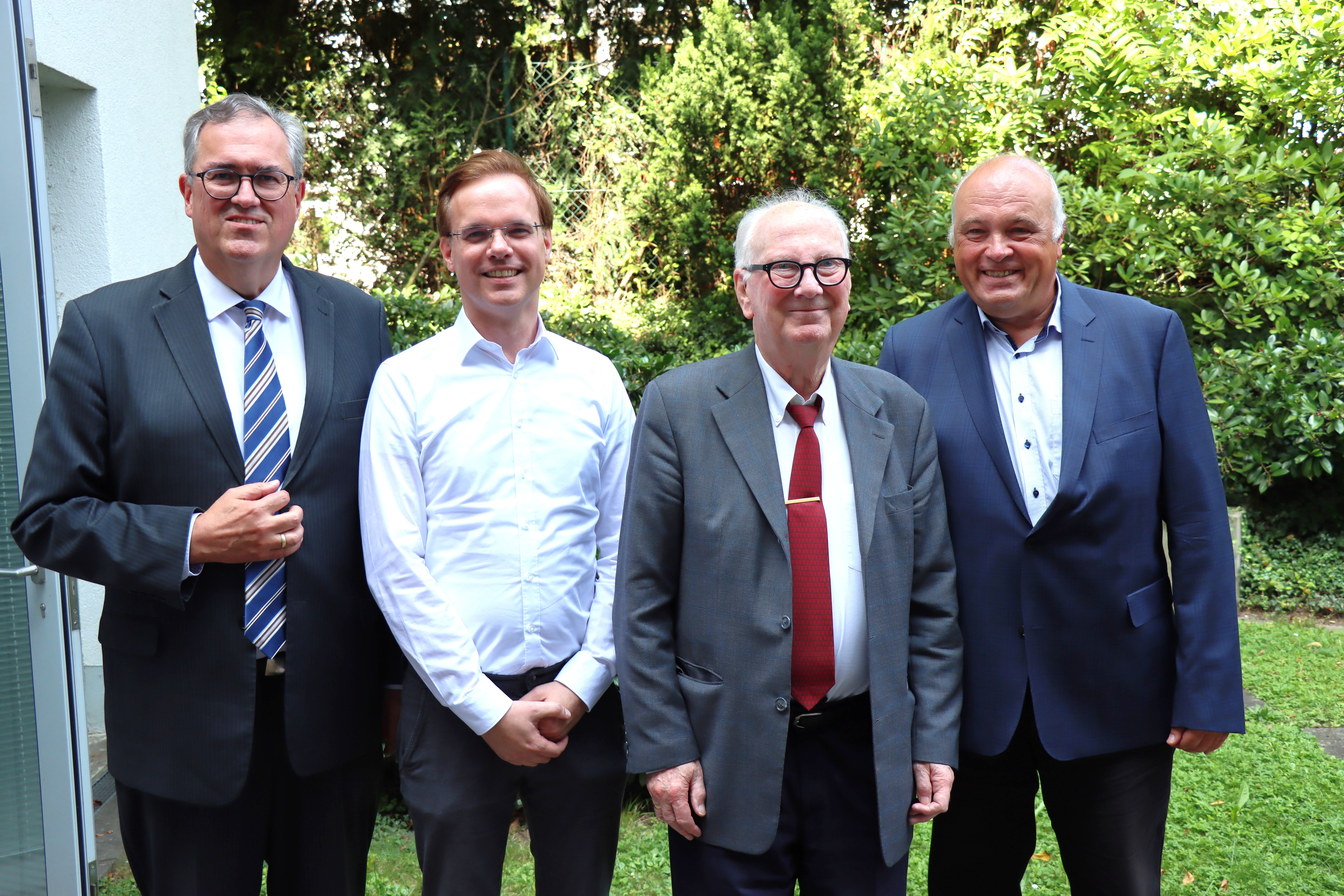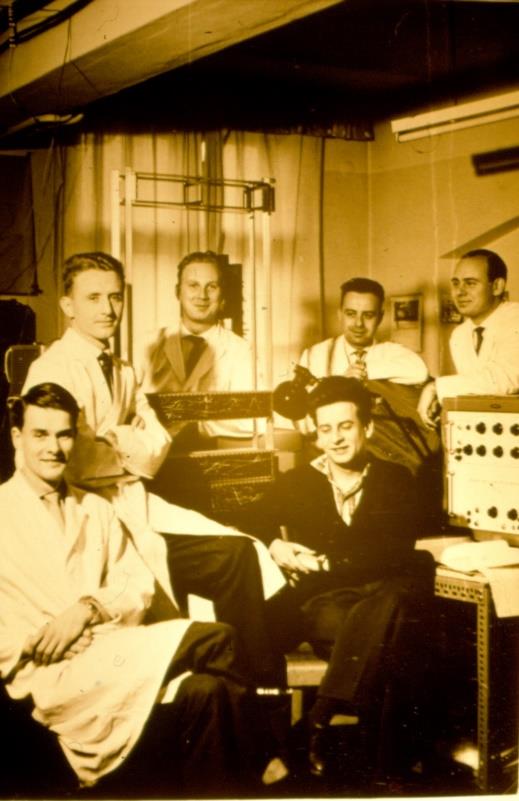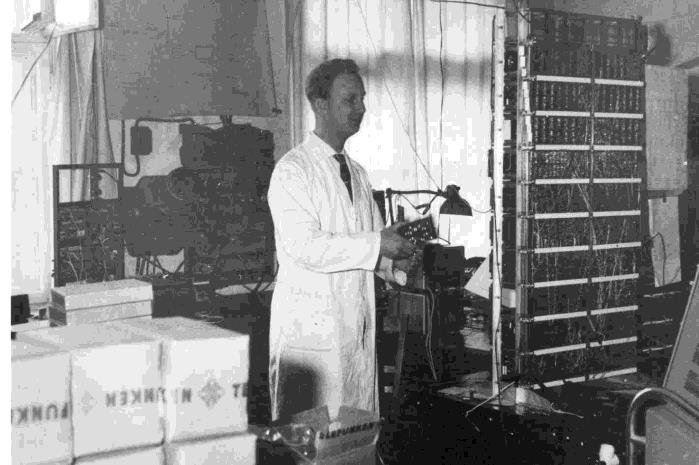Dr Wulf-Dieter Wirth: A patent as a 90th birthday present
The name Dr. Wulf-Dieter Wirth conjures up a picture of an extraordinary man — a researcher whose impact on the development of radar technology is unrivalled still today. His expertise is held in the very highest esteem worldwide, and his pioneering spirit is the stuff of legends. Wirth, who holds the role of Senior Scientist at the Wachtberg-based Fraunhofer Institute for Communication, Information Processing and Ergonomics FKIE, celebrated his 90th birthday back in August. The landmark occasion added yet another outstanding achievement to his career, as he is officially the oldest of the Fraunhofer-Gesellschaft’s approximately 32,000 employees.



Although Wirth no longer pursues his passion for sailing, he remains an ardent lover of music to this day — and of radar technology, a field in which he has set milestones over a research career spanning more than six decades. “It is quite simply remarkable to see how you have inspired — and continue to inspire — entire generations of researchers,” said FKIE Institute Director Professor Peter Martini at a celebratory colloquium marking Wirth’s 90th birthday. “You have helped young researchers to not only take their first steps into truly uncharted territory, but also make their own successful mark on it — as a result of which you have become a pioneer in array-based battlefield acoustics.”
After completing his studies at Technische Universität Berlin in 1959, Wirth’s research career started in the High-frequency Technology department at the Heinrich-Hertz-Institut. He recalls: “The professor supervising me at the time, Friedrich-Wilhelm Gundlach, asked if I wanted to take part in a research assignment on radar, signals and digitalization.” These subjects were completely new territory for him and his colleagues, he adds, so the first step involved reading up on them in specialist literature. “Not only that, but most of it was also in English, so we had a crash course in the language at the same time,” he says.
Relocation from Berlin to Werthhoven in the 1960s
In the mid-1960s, the researcher took up a position as head of the Electronics department at the newly established predecessor to Fraunhofer FKIE: the Research Institute for Radio and Mathematics (FFM) in Werthhoven. “Moving to the other side of the country, from Berlin to Werthhoven, was quite the upheaval, of course,” recalls Wirth. “However, Berlin’s status under the Four Power Agreement meant that it wasn’t a feasible venue for radar research at that time — plus, it benefited us to be near the German Federal Ministry of Defence in Bonn.”
In the years that followed, Wirth achieved a milestone in radar technology through the design and development of electronic steerable radar (ELRA) with computer applications for air traffic control and air defence. “I’d read an article about sequential testing for radar usage,” says the 90-year-old, “and that inspired me to start thinking about building an electronic steerable radar as an experimental system. I was aware of the huge American AN/FPS-85 space surveillance system from literature, and thought that a smaller system designed for terrestrial airspace surveillance would be a fascinating project to work on.” Indeed, it turned out to be both fascinating and a huge success.
Wirth continually worked on developing the ELRA system alongside his colleagues, focusing on aspects including the volume array for extending the field of view, the OLPI radar, plus operating modes and parameters for array radars. In 1999, the time came for him to retire. “The institute director at that time asked me if I wanted to keep working, so I just said yes and kept on going,” he says. That was some 25 years ago.
Research in the field of battle field acoustics
Wirth collated his decades of research work in “Radar Techniques Using Array Antennas” — published initially in 2001 and then as a second edition in 2013. Held in high regard within his scientific field, it is a staple of every specialist library. Today, he is conducting research alongside Macarena Varela and Dr. Marc Oispuu in the Sensor Data & Information Fusion (SDF) department at FKIE, looking primarily at battlefield acoustics. The three researchers’ work has been so innovative that they have successfully managed to submit a patent application — signed just in time for Wirth’s 90th birthday.
He has recently extended his employment contract for one day a week by an additional two years. The thought of being the oldest of the Fraunhofer-Gesellschaft’s approximately 32,000 employees — “by some way,” to quote Fraunhofer’s headquarters in Munich — elicits a smile from him. Giving up altogether simply isn’t on the cards, however: “I feel a huge sense of gratitude when I look back on my work,” he says. “I’ve had supervisors who encouraged me, and employees who have been hardworking and capable. And I’ve had the privilege of dedicating my life to researching interesting things. Quite simply, I love what I do.”
